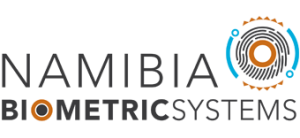Implementing Biometrics based Systems: Identifying Selection Criteria
Following up from last week’s article, researchers from the Biometrics Research Laboratory, BRL, at Namibia Biometric Systems recommends that it is a good idea to establish what criteria make sense to use in selecting a biometric solution. There are quite a large number of biometric technologies and applications out there, so the first step has to be to establish what characteristics of the environment and the potential biometric solutions are of interest and useful in determining what to select.
At BRL we believe that it’s important to be familiar with the people who’ll be using the biometric solution. At the very least, you must ask and have answers to the following questions before implementing:
Ethnic Background – It is important to understand the ethnic background of who will be the users of the biometric system. For example, will the users be members of the general public with a mix of ethnic and education levels and a variety of attitudes? This will be vital in selecting which biometric system will be suitable for the ethnic background.
Employee Education – It is important to understand the technical background of the users. For example, will the users be employees in a high-tech firm or not? The higher the technological background of the users, the more likely that the users will be aware of biometric system and hence require more specialised training. It is vital to provide educational material suitable for the users.
Frequency of Use – It is important to understand that some biometric systems are more suitable for high frequency of usage than others. Therefore it is important to ask whether the biometric system will be used several times a day or just a couple of times each year?
User characteristics – It is important to understand who will be using the biometric system. For example, will the users be in a hurry and possibly be a little bit impatient (biometric controlled entry into a public restroom comes to mind just now)?
Researchers from the BRL show that it is vital to understand about who will be the users of the biometric system. The research further shows that most government and private organisations implementing biometric based solution under mine these criteria. For example, researchers at BRL believe that health care is an area where convenient reliable access to information isn’t just nice to have but it’s an absolute requirement with lives hanging in the balance. In addition, it happens to be a place where access control to extremely sensitive information is required by law and the expectation of patients, so biometric access controls are often considered for these environments.
More information on the implementation of biometrics based solutions can be requested from info@namibiabiometricsystems.com
